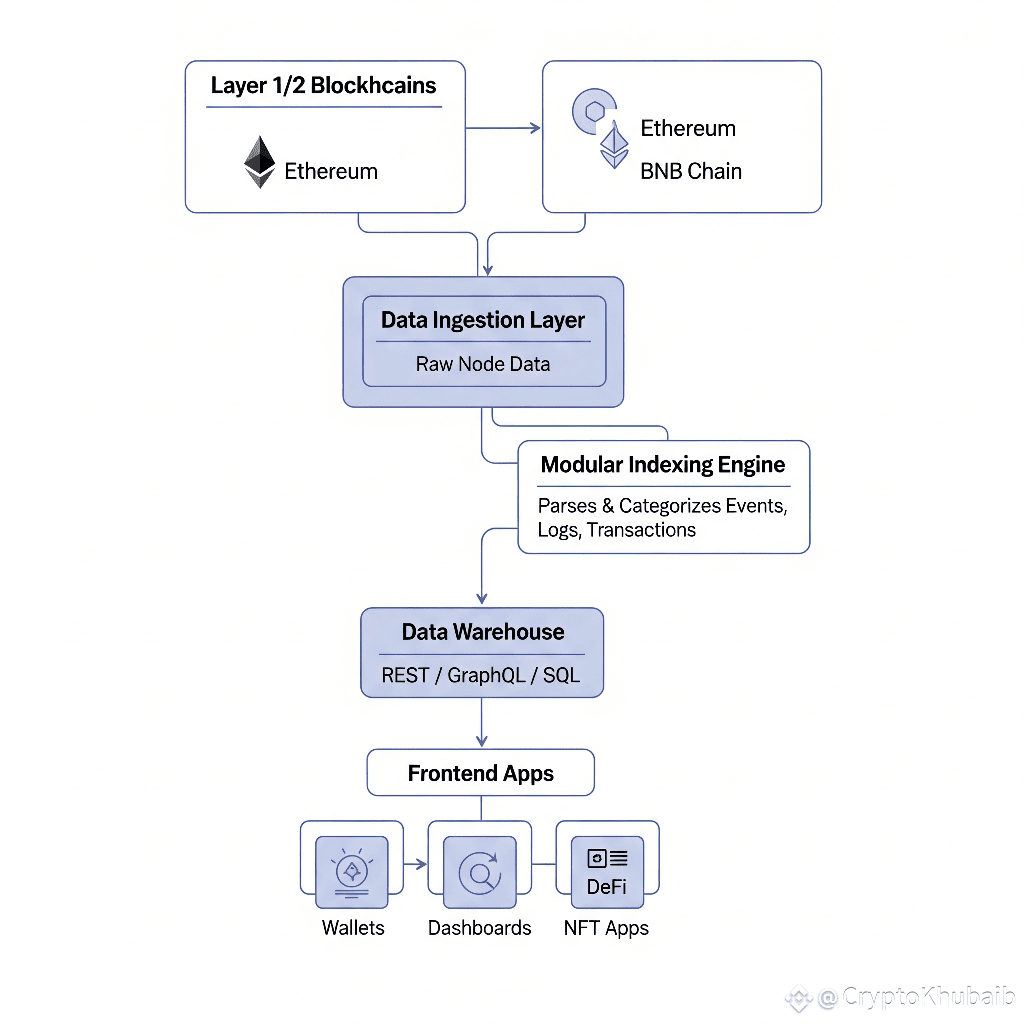In the evolving world of Web3, data is power—but harnessing that power requires structure, scalability, and reliability. This is where Chainbase comes into play. Built to serve developers, analysts, and enterprises alike, Chainbase has positioned itself as a decentralized data infrastructure protocol, enabling real-time access to blockchain data in a modular, composable fashion.
Let’s explore the architecture, use cases, future insights, and how Chainbase empowers developers and businesses to build better, faster, and smarter.
🔍 What is Chainbase?
Chainbase is a Web3 data infrastructure platform that provides high-performance APIs and indexer frameworks to query, analyze, and leverage blockchain data. It acts as a middleware between raw on-chain data and the application layer, making blockchain development faster and more efficient.
At its core, Chainbase is solving a key problem: on-chain data is abundant but not easily accessible or usable at scale.
⚙️ How Chainbase Works (Architecture)
1. Data Sources (Layer 1/2 Chains)
Chainbase connects to a wide variety of chains like Ethereum, BNB Chain, Arbitrum, Polygon, etc.
2. Ingestion Layer
Real-time and historical data from nodes are ingested via RPC endpoints and parsed.
3. Indexing Engine
Chainbase uses modular and scalable indexers that normalize blockchain events, transactions, and logs into queryable formats.
4. Data Warehouse (Storage Layer)
Efficient storage using columnar databases or time-series formats makes access blazing fast.
5. API Gateway
Developers can access structured data through GraphQL, SQL-like query builders, or REST APIs.
6. SDKs & Tooling
Frontend teams and data scientists can integrate quickly using Chainbase SDKs in Python, JavaScript, and TypeScript.
💼 Use Cases of Chainbase
DeFi Dashboards: Real-time tracking of liquidity pools, lending rates, yield strategies.
NFT Analytics: Floor price trends, wallet activity, marketplace tracking.
DAO Tools: Governance proposals, voting activity, and member engagement stats.
GameFi Analytics: Player engagement, token economies, in-game transactions.
Wallet Apps: Transaction history, token balances, multi-chain insights.
📊 Why Developers Choose Chainbase
Real-Time Indexing: Near-instant availability of on-chain events.
Multi-Chain Support: One platform for all major EVM chains.
Custom Pipelines: Build custom indexers for your specific use case.
Low Latency APIs: Data in milliseconds for high-performance apps.
Easy Integrations: Works seamlessly with existing analytics, wallets, and dashboards.
🌐 Chainbase in the Modular Stack Era
The rise of modular blockchains means execution, consensus, and data availability are being split across layers. Chainbase fits perfectly into this paradigm, acting as a data availability and accessibility layer that developers can plug into without reinventing the wheel.
🔮 Future of Chainbase
ZK Integration: Verifiable data queries using ZK proofs.
AI-Ready Pipelines: Chainbase plans to support ML models for predictive analytics.
Decentralized Data Nodes: Moving towards a fully decentralized architecture for data resilience.
Token Utility: A native token may be introduced to incentivize data providers, consumers, and indexer builders.
💡 Insight: Why Chainbase Matters
Web3 needs data abstraction like Web2 had with Firebase, Supabase, or Hasura. Chainbase is shaping up to be the Firebase of Web3 data, letting developers focus on logic and UX—not parsing blockchain hex logs.
🧠 Final Thoughts
In an ecosystem where data complexity blocks innovation, Chainbase is unlocking simplicity and power. Whether you're a solo hacker or a large protocol, Chainbase gives you the building blocks for intelligent blockchain apps.
Start building smarter with @Chainbase Official



